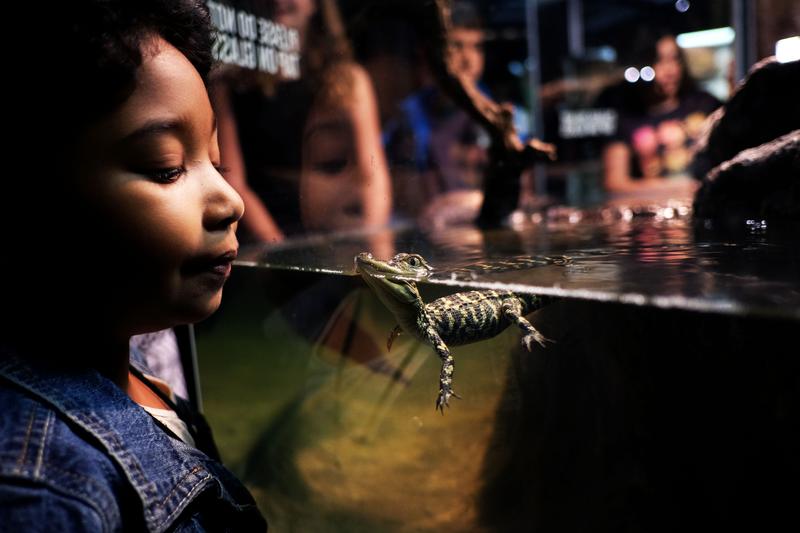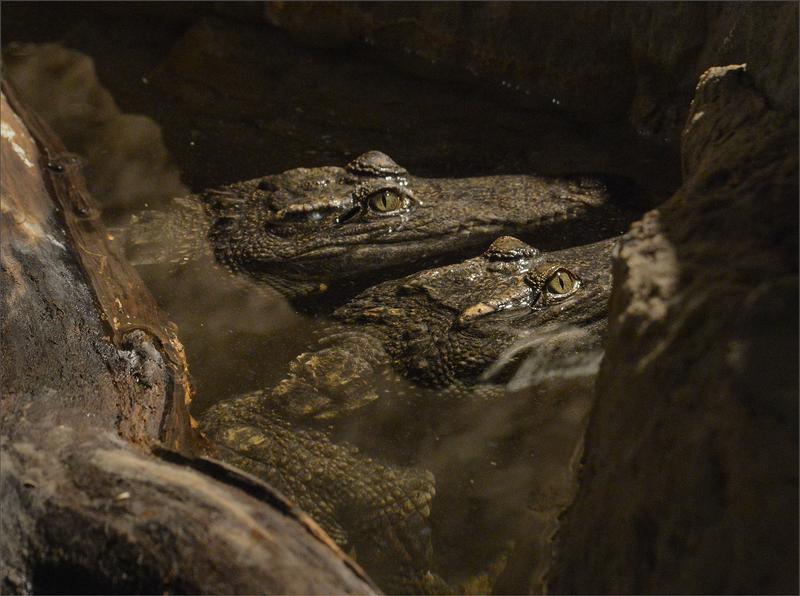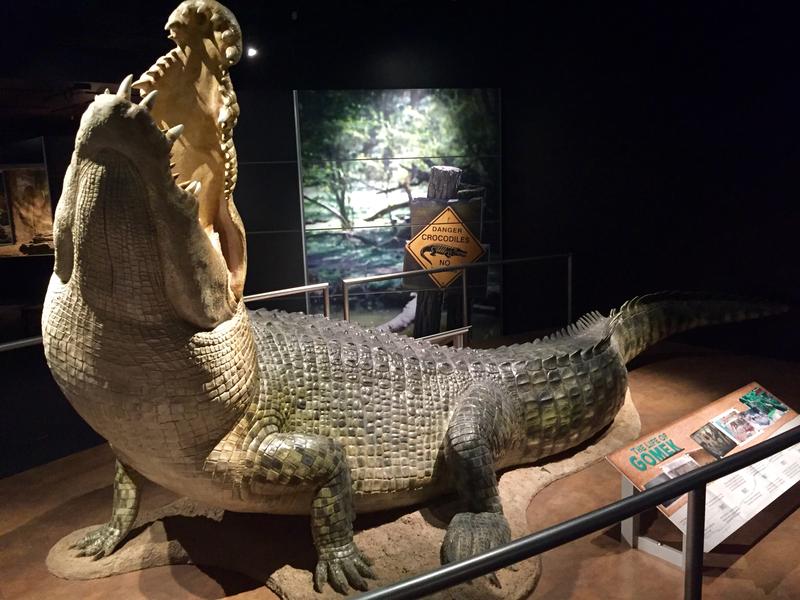
What's the difference, again, between an alligator and a crocodile?
An interactive exhibit opening Saturday at the American Museum of Natural History hopes to answer that question. "Crocs: Ancient Predators in a Modern World" explores some of the world's most feared, and apparently misunderstood, predators.
"When [people] walk in the door and then walk out the door, they're gonna have a completely different picture of crocodiles," said exhibit curator Mark Norell. "I think most people view them as slow and stupid and prehistoric."
They're not.
Norell said crocodilians — which includes crocodiles, alligators, caimans and gharials — have much larger brains and complex behaviors than scientists previously thought. The exhibit delves into those behaviors, as well as reptiles' evolutionary history, biology and their often shaky relationship with humans, the biggest threat to their existence.
The exhibit also explores the way crocodilians could benefit humans with things like fighting infections. Crocodiles withstand major injuries and wounds that heal with practically no infection, despite sitting in bacteria-ridden swamps.
Studies that were done on Siamese crocodiles (one of the live species in the exhibit) have shown their blood has antimicrobial peptides that could be used to develop human antibiotics, said Evon Hekkala, a research associate at the museum's Department of Herpetology.
The show features several life-sized models, including an 18-foot-long replica of Gomek, the biggest saltwater crocodile ever exhibited in the U.S.
Museumgoers can test their strength against a crocodile's crushing bite. And even learn how to speak "croc" by listening to alligator hisses, clicks and growls.
But, perhaps the show's main draw, especially for kids, are the live crocodiles. The exhibit has four different species, including baby American alligators.
"Even though I'm a little bit scared of like, what's the word, reptiles, I think it's really cool that they have live crocodiles here," said 11-year-old Ben Stern, who'd never seen a live crocodiles before.


